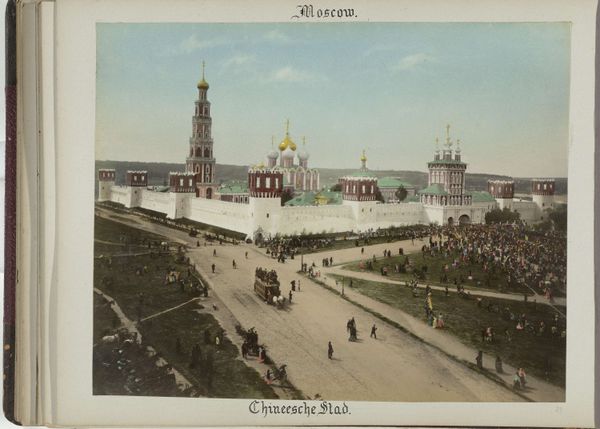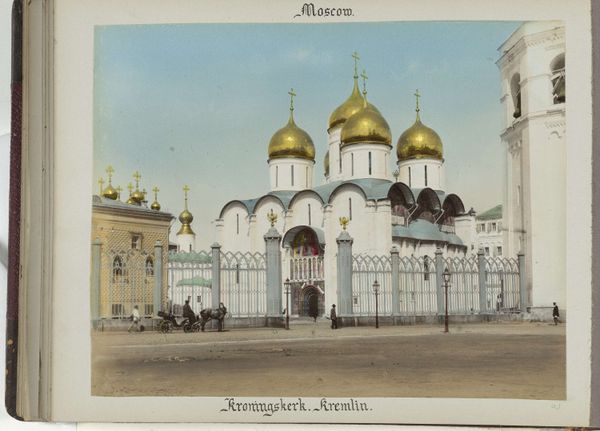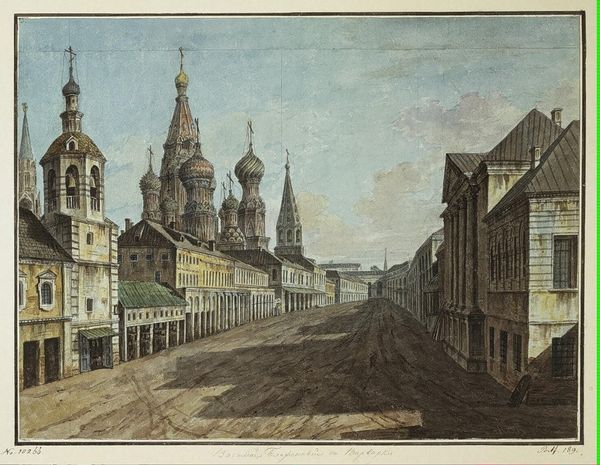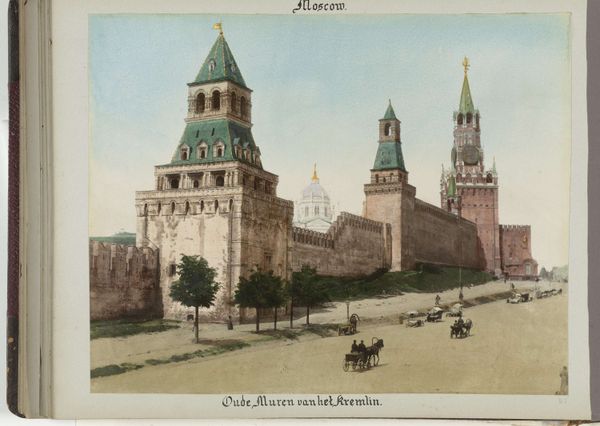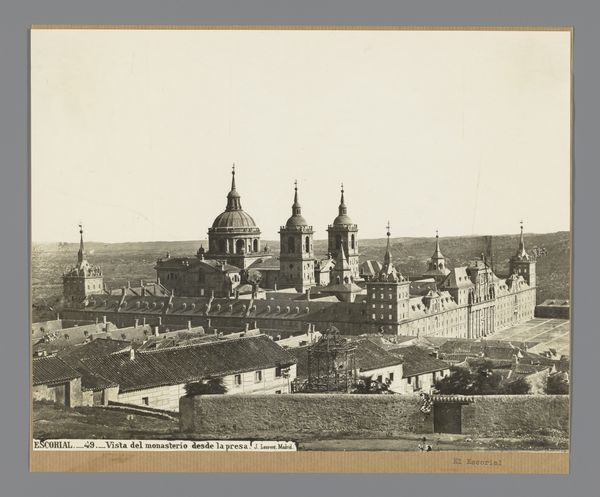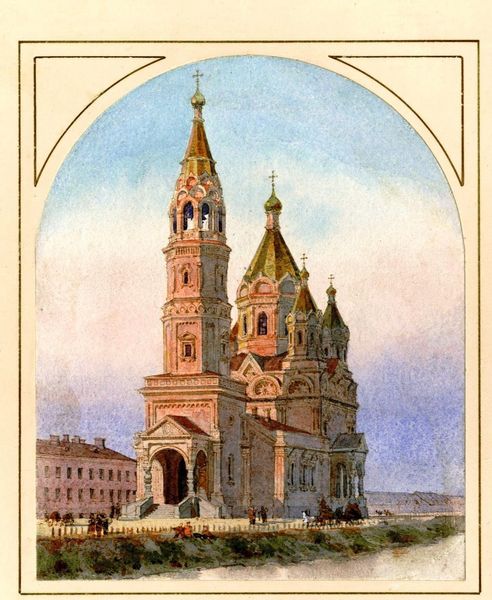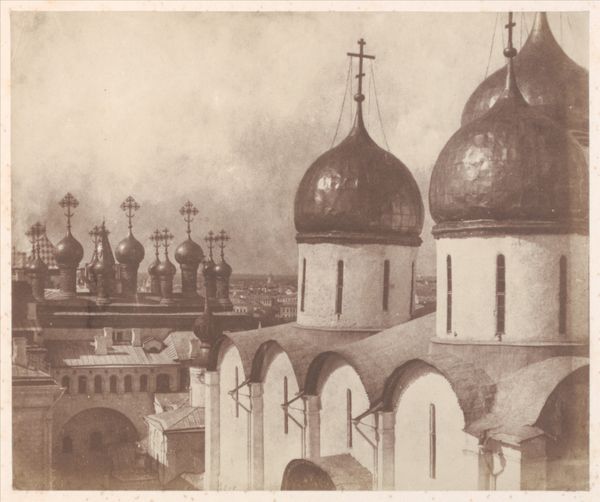
print, photography
# print
#
landscape
#
photography
#
coloured pencil
#
orientalism
#
russian-avant-garde
#
cityscape
#
watercolor
#
realism
Dimensions: height 220 mm, width 275 mm, height 259 mm, width 365 mm
Copyright: Rijks Museum: Open Domain
Curator: What immediately strikes me about this print, "Lubyanka plein, gelegen voor een ommuurd stadsdeel in Moskou," dated 1898, is the overwhelming feeling of temporal distance. The print process gives a delicate texture, making the hustle and bustle of Lubyanka Square seem like a dream. Editor: Yes, it's a deceptively picturesque dream. Those horses and carriages, the crowds milling about - there's a palpable sense of enforced order, wouldn’t you say? The walls looming in the background serve almost like panoptic architecture; power seems subtly but visibly encoded here. Curator: Definitely, the image operates on many layers. On the surface, it depicts everyday life, but when you think about the late 19th century in Russia – the seeds of revolution being sown, the rigid social structures – that everydayness was fraught with tension, impacting class and gender roles. This isn't merely a photograph of a pretty cityscape, but an active portrayal of urban existence and control. Editor: I am particularly drawn to the symbolic importance of the buildings shown, standing tall in their architectural authority, particularly that Russian orthodox cupola – it embodies more than just religious iconography, but traditional Russia itself and how that intersects with power. The visual weight certainly communicates an intention, or a hope. It evokes centuries of Tsarist Russia, but simultaneously it's being documented through photography – a very modern medium at that moment. Curator: Exactly! Consider also the positionality of the photographer. This vantage point, slightly elevated and distanced, suggests a particular socio-economic status. The act of observing and documenting this space, frozen in time through photography and print, speaks volumes about power dynamics. It could tell us a lot about privilege and class in Moscow at that point. Editor: The subtle colouration also fascinates me, that slightly dreamy palette lends an aura of myth-making. Almost creating a sense of nostalgic timelessness – which feels like an ideological maneuver in itself. Curator: It absolutely speaks to an active framing – or perhaps even sanitizing – of the era. Considering art’s historical entanglements is so crucial when regarding this particular piece. Thanks for highlighting those fascinating tensions! Editor: And thank you. Seeing it framed in this intersectional context has also truly broadened my perspective!
Comments
No comments
Be the first to comment and join the conversation on the ultimate creative platform.


